The Importance of Barriers in Preventing Forklift Injuries in Australian Factories
Date Posted:8 May 2024
By serving as physical barriers, visual cues, and traffic control mechanisms, barriers play a vital role in preventing forklift-related injuries and accidents. Moreover, compliance with safety standards and adherence to best practices ensure optimal...
In the bustling environment of Australian factories, safety should always remain a top priority. Among the various hazards present in such settings, forklift operations pose a significant risk to both workers and property. In this blog, we delve into the importance of installing barriers in factories to mitigate the risk of forklift-related injuries and accidents.
Understanding the Risks:
Forklifts are indispensable tools in warehouse and factory settings, facilitating the movement of heavy loads with ease. However, their sheer size and power can turn them into potential hazards if not managed properly. According to Safe Work Australia, forklifts are involved in a considerable number of workplace accidents each year, ranging from minor incidents to fatal injuries. Understanding the risks associated with forklift operations is paramount in devising effective safety measures.
The Role of Barriers:
Barriers play a crucial role in creating safe zones within factory premises, particularly in areas where forklifts operate. These barriers serve multiple purposes:
Physical Segregation: Barriers physically separate pedestrian walkways and work areas from forklift paths, reducing the likelihood of collisions. This segregation is vital in environments where both workers and forklifts share the same space, minimizing the risk of accidents.
Visual Cues: Brightly colored barriers serve as visual cues, alerting pedestrians and forklift operators to designated zones. By clearly demarcating safe pathways and restricted areas, barriers help improve awareness and promote adherence to safety protocols.
Traffic Control: In busy factory settings where multiple forklifts are in operation simultaneously, barriers act as a form of traffic control. By guiding the flow of vehicles and directing pedestrian traffic, barriers help maintain order and reduce the risk of congestion-related accidents.
Compliance with Safety Standards:
In Australia, workplace safety regulations set forth by Safe Work Australia mandate the implementation of adequate safety measures to protect workers from potential hazards, including those associated with forklift operations. Failure to comply with these standards not only jeopardizes the well-being of employees but also exposes businesses to legal liabilities and financial penalties.
Cost-Benefit Analysis:
While the initial investment in barriers may seem substantial, the long-term benefits far outweigh the costs. Consider the following:
Prevention of Injuries: By effectively segregating pedestrian and forklift traffic, barriers significantly reduce the risk of workplace injuries, resulting in fewer workers' compensation claims and associated costs.
Minimization of Property Damage: Accidental collisions involving forklifts can cause extensive damage to machinery, equipment, and infrastructure within the factory. Barriers act as protective shields, mitigating the impact of such incidents and minimizing repair and replacement expenses.
Enhanced Productivity: A safer work environment fosters greater employee confidence and morale, leading to increased productivity and efficiency. With reduced downtime due to accidents, businesses can maintain consistent workflow and meet production targets effectively.
Best Practices for Barrier Implementation:
To maximize the effectiveness of barriers in preventing forklift injuries, adherence to best practices is essential:
Strategic Placement: Identify high-risk areas within the factory where barriers are most needed, such as intersections, blind corners, and loading docks. Strategic placement ensures optimal protection without impeding workflow.
Robust Construction: Invest in high-quality barriers constructed from durable materials capable of withstanding impact forces. Regular maintenance and inspection are also crucial to identify any signs of wear and tear promptly.
Employee Training: Provide comprehensive training to forklift operators and other staff members on the importance of adhering to safety protocols and respecting barrier boundaries. Encourage a culture of accountability and vigilance in observing safety guidelines.
In conclusion, the installation of barriers in Australian factories is not merely a recommended safety measure but a necessity in safeguarding the well-being of workers and protecting valuable assets. By serving as physical barriers, visual cues, and traffic control mechanisms, barriers play a vital role in preventing forklift-related injuries and accidents. Moreover, compliance with safety standards and adherence to best practices ensure optimal effectiveness and long-term benefits for businesses. Prioritizing workplace safety through barrier implementation demonstrates a commitment to the welfare of employees and contributes to the overall success and sustainability of the organization.
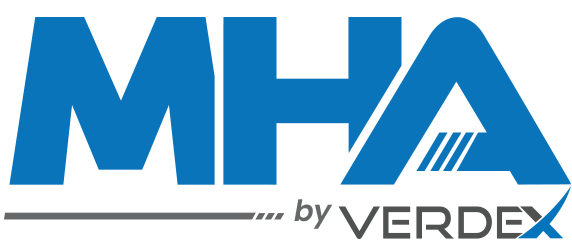

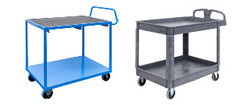
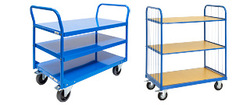
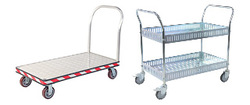
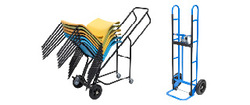
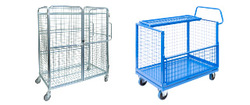
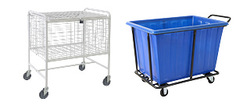
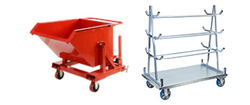
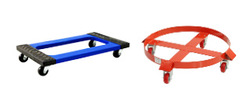
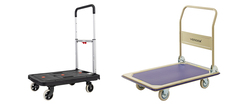
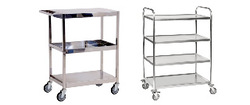
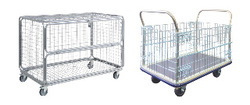
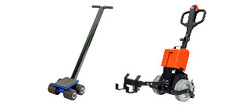
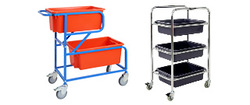
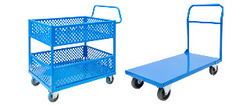
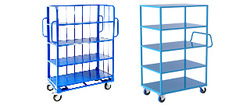
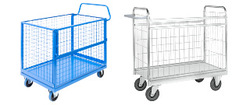
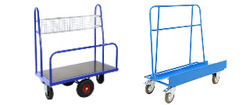
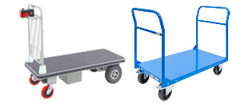
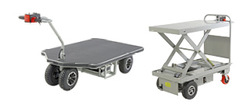
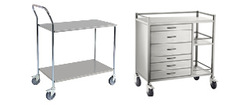
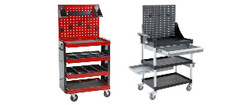
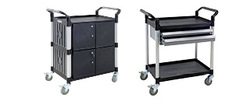
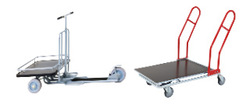
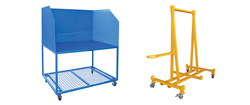



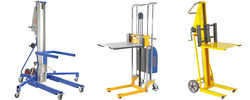



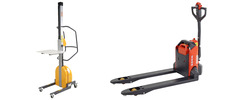
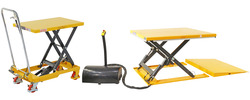
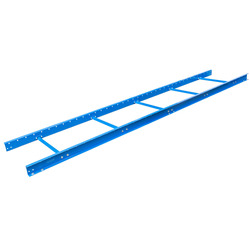
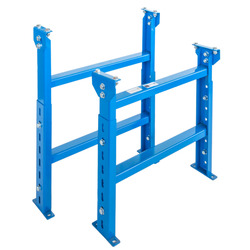
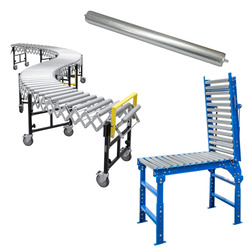
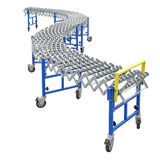



















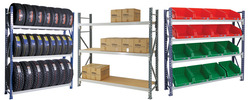
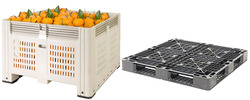
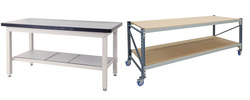
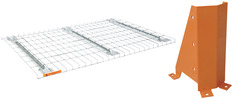
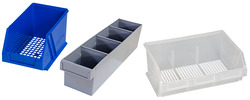

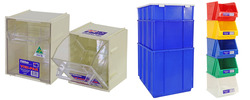

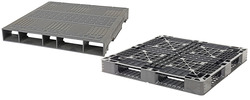

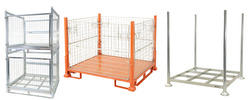
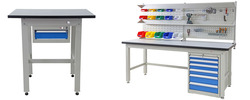
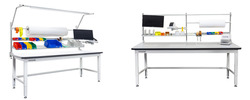

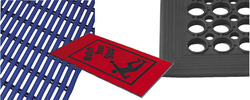
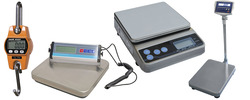



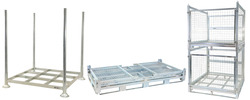
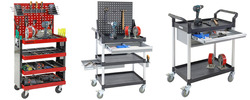
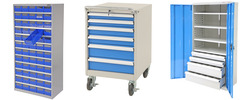

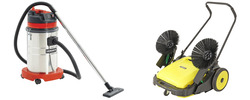











 Trolleys / Hand Trucks
Trolleys / Hand Trucks 2 Tier Trolleys
2 Tier Trolleys 3 Tier Trolleys
3 Tier Trolleys Aluminium Trolleys
Aluminium Trolleys Appliance & Hand Trucks
Appliance & Hand Trucks Cage Trolleys
Cage Trolleys Cleaning Carts & Trolleys
Cleaning Carts & Trolleys Construction Trolleys
Construction Trolleys Dollies
Dollies Foldable Trolleys
Foldable Trolleys Hospital Trolleys
Hospital Trolleys Laundry/Linen Trolleys
Laundry/Linen Trolleys Load Skates & Tow Tugs
Load Skates & Tow Tugs Mail / Office Trolleys
Mail / Office Trolleys Multi Purpose Trolleys
Multi Purpose Trolleys Multi-Tier Shelf Trolleys
Multi-Tier Shelf Trolleys Order Picking Trolleys
Order Picking Trolleys Panel Cart Trolleys
Panel Cart Trolleys Platform Trolleys
Platform Trolleys Powered Trolleys
Powered Trolleys Stainless Steel Trolleys
Stainless Steel Trolleys Tool Trolleys
Tool Trolleys Utility Carts
Utility Carts Warehouse Trolleys
Warehouse Trolleys Custom Trolleys
Custom Trolleys Lifting Equipment
Lifting Equipment Forklift Attachments
Forklift Attachments Jib Attachments
Jib Attachments Lifting Hoists & Pallet Hooks
Lifting Hoists & Pallet Hooks Manual Stackers & Lifters
Manual Stackers & Lifters Pallet Jacks
Pallet Jacks Pallet Lifters
Pallet Lifters Pallet Rotators & Dispenser
Pallet Rotators & Dispenser Powered Pallet Trucks & Electric Lifters
Powered Pallet Trucks & Electric Lifters Scissor Lift Trolleys and Tables
Scissor Lift Trolleys and Tables Conveyor Equipment
Conveyor Equipment Conveyor Frames
Conveyor Frames Conveyor Stands
Conveyor Stands Roller Conveyors
Roller Conveyors Skate Wheel Conveyors
Skate Wheel Conveyors Access Equipment
Access Equipment Container & Yard Ramps
Container & Yard Ramps Step Stools & Ladders
Step Stools & Ladders Work Platforms & Crane Cages
Work Platforms & Crane Cages Drum Handling
Drum Handling Drum Storage & Bunding
Drum Storage & Bunding Drum Trolleys & Lifters
Drum Trolleys & Lifters Forklift Drum Handling
Forklift Drum Handling Containment & Spillage
Containment & Spillage Aerosol Cans Storage Cages
Aerosol Cans Storage Cages Bunded Pallets & Storage
Bunded Pallets & Storage Corrosive Goods Storage Cabinets
Corrosive Goods Storage Cabinets Flammable Liquid Cabinets
Flammable Liquid Cabinets Forklift Gas Storage Cages
Forklift Gas Storage Cages Gas Cylinder Storage
Gas Cylinder Storage Site Storage
Site Storage Spill Kits
Spill Kits Stillage Cages
Stillage Cages Waste Handling
Waste Handling Bin Lifters & Tippers
Bin Lifters & Tippers Plastic Waste Bins and Carts
Plastic Waste Bins and Carts Steel Waste and Tipping Bins
Steel Waste and Tipping Bins Storage Equipment
Storage Equipment Heavy Duty Cabinets & Benches
Heavy Duty Cabinets & Benches Heavy Duty Shelving
Heavy Duty Shelving Mega Bins & Pallets
Mega Bins & Pallets Packing Benches
Packing Benches Pallet Racking Accessories
Pallet Racking Accessories Parts Trays & Stor-Pak Bins
Parts Trays & Stor-Pak Bins Pegboard & Louvre Panels
Pegboard & Louvre Panels Plastic Bins
Plastic Bins Plastic Handling Solutions Bins
Plastic Handling Solutions Bins Plastic Pallets
Plastic Pallets Stack & Nest Bins
Stack & Nest Bins Storage Cages
Storage Cages Workplace Equipment
Workplace Equipment Workbenches
Workbenches Modular Workbenches
Modular Workbenches Electric Height-Adjustable Workbenches
Electric Height-Adjustable Workbenches Floor Matting
Floor Matting Industrial Weighing Scales
Industrial Weighing Scales Pallet Wrapping & Packaging Machinery
Pallet Wrapping & Packaging Machinery Ramps
Ramps Stationery Cupboards
Stationery Cupboards Storage and Stillage Cages
Storage and Stillage Cages Tool Trolleys
Tool Trolleys Tooling Cabinets
Tooling Cabinets Wheelie Bins
Wheelie Bins Workshop Equipment
Workshop Equipment Safety Equipment
Safety Equipment Gloves and PPE
Gloves and PPE Pallet Rack Post Protectors
Pallet Rack Post Protectors Safety Barriers & Bollards
Safety Barriers & Bollards Safety Knives & Cutters
Safety Knives & Cutters Signs and Traffic Supplies
Signs and Traffic Supplies Tool & First Aid Boxes
Tool & First Aid Boxes Construction Equipment
Construction Equipment Concrete Equipment
Concrete Equipment General Site Equipment
General Site Equipment Lifting Equipment
Lifting Equipment Site Storage
Site Storage Waste
Waste 









